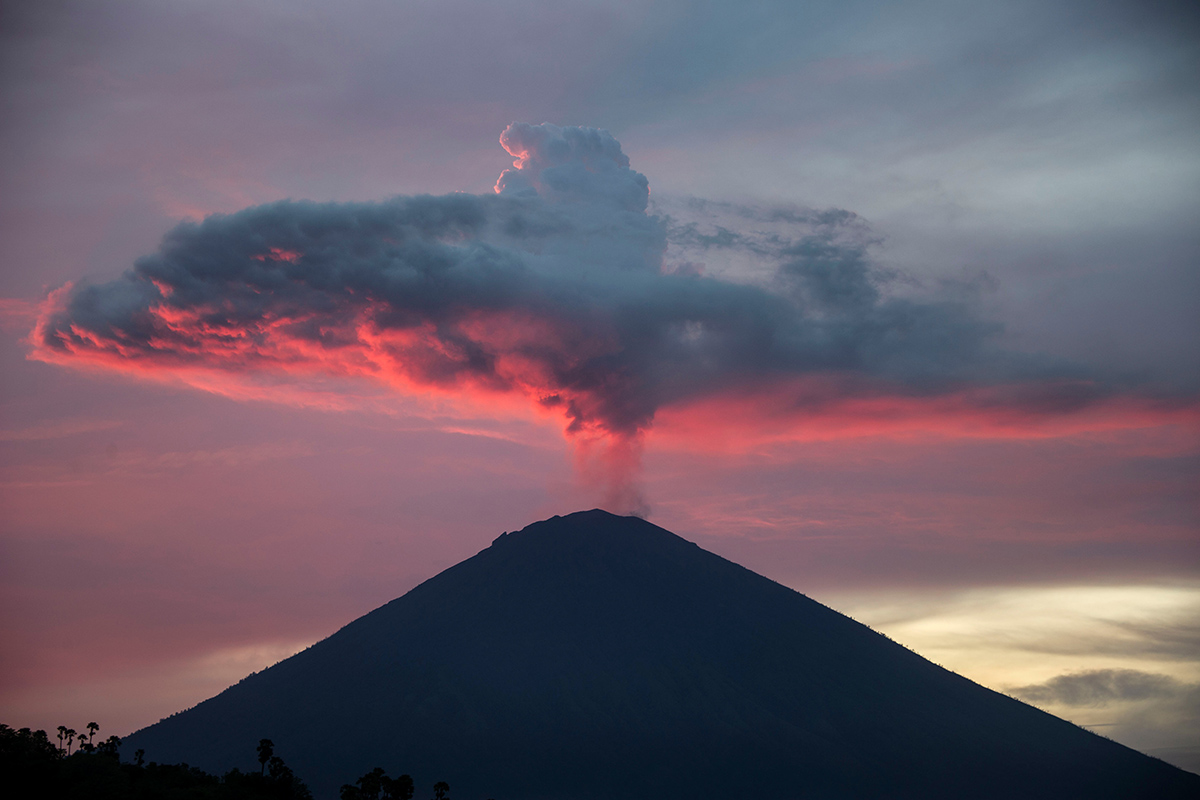According to the National Agency for Disaster Management (BNPB), a pinkish plume was seen over Mount Agung in Bali early on Monday morning.
The head of the National Disaster Mitigation Agency of Indonesia, Sutopo Purwo Nugroho shared a photograph on Twitter of the plume rising form the volcano in Bali. He also stated that the volcanic activity remains high at Mount Agung.
The Volcanology and Geological Disaster Mitigation Agency (PVMBG) said that greyish-white plumes have soared as high as 2,000m above the crater.
As of today, the international airports in Bali and Lombok are operating per usual despite the ash plumes and a code orange aviation warning.
Amidst a rumbling volcano, cancelled flights and expiring visas are other concerning factors in the holiday island of Bali.
Even with the current ash and plume clouds by Mount Agung, the impact on the island is already catastrophic - a collapsing economy that is largely dependent on tourism and agriculture.
A further eruption could have ramifications beyond Bali, as it threatens to alter the global climate. However, beneath all of this there is a silver lining.

Statistics showing what's at stake in Bali. Source: Bloomberg
A cooler climate
According to scientists, the very same ash cloud that has forced the cancellation of hundreds of flights to and from the island has also the the potential to cool the global climate for one or two years.
The ash cloud that Mount Agung continues to spew up a few thousand meters into the sky is a cocktail of volcanic dust and sulfur dioxide, known as aerosols. The massive dispersal of volcanic aerosols in the stratosphere, as seen after the 1991 eruption of Mount Pinatubo in the Philippines, contributed to the blocking of sunlight and heat reaching the Earth’s surface.
This resulted in a provisionally cooling of the Northern Hemisphere by up to 0.6 degrees Celsius.
According to a senior research associate and senior lecturer in mechanical and aerospace engineering at Cornell University who has authored a series of recent papers on how to mimic volcanoes by injecting sulfur dioxide into the stratosphere, Douglas MacMartin stated that “large volcanic eruptions, such as Mt. Pinatubo in 1991, and perhaps Agung in 2017 if it is large enough, cool the planet for a year or more by putting sulfur dioxide into the stratosphere where it forms sulfate aerosols that reflect sunlight.
“In principle, humans could deliberately do the same thing to help manage some impacts of climate change, an idea referred to as geoengineering.”
The field of geoengineering or climate engineering is the deliberate large-scale intervention in the Earth's natural systems to counteract climate change. The ash cloud of Mount Agung has opened doors once again to researchers and scientist to delve into the manipulation of the climate to produce cooler climate for the region.
Nevertheless, for all its promise as a means of slowing global warming, the field of geoengineering remains highly contentious.
“There are a lot of concerns and uncertainties surrounding this idea, but we may be able to learn something about this from observing the stratospheric response to the Agung eruption, which would help improve how climate models represent processes such as sulfate aerosol formation and upper atmospheric chemistry,” added Douglas.
Recommended stories:
